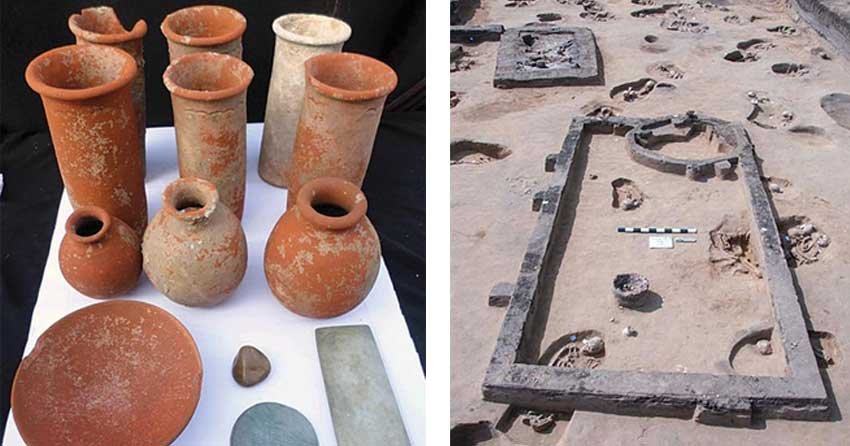Dozens of ancient Egyptian graves found with rare clay coffins
- Details
- Written by Red Sea Bulletin
- Category: Heritage, History, Discovery
- Hits: 1372

Archaeologists have discovered 83 graves from ancient Egypt, but the human remains weren't interred in sarcophagi, as is often the case. Rather, the deceased were buried in clay coffins.
Eighty of the graves date to the civilization of Bhutto, or Lower Egypt, during the first half of the fourth millennium B.C. The burials were found during archaeological excavations in the Dakahlia governorate of northern Egypt, not too far from the Mediterranean Sea.
The team also found three graves from the Naqada III period, which lasted from about 3200 to 3000 B.C. It's unusual to find clay coffins in Dakahlia from Naqada III. In other parts of Egypt during that time, the elite were usually buried in mud-brick tombs or wood coffins, while poorer people were often buried in shallow holes.
Eighty of the graves date to the civilization of Bhutto, or Lower Egypt, during the first half of the fourth millennium B.C. The burials were found during archaeological excavations in the Dakahlia governorate of northern Egypt, not too far from the Mediterranean Sea.
The team also found three graves from the Naqada III period, which lasted from about 3200 to 3000 B.C. It's unusual to find clay coffins in Dakahlia from Naqada III. In other parts of Egypt during that time, the elite were usually buried in mud-brick tombs or wood coffins, while poorer people were often buried in shallow holes.
The Naqada culture is old, even by Egyptian standards, dating to pre-dynastic Egypt during the Chalcolithic era, or Copper Age. The new discovery indicates that many people lived in this area at that time. The excavated Naqada III graves contain a trove of artifacts. So far, excavators have discovered handmade pottery, oyster shells, a bowl in the shape of a tilapia and two bowls — one rectangular and one circular — of kohl, a cosmetic that Egyptians painted around their eyes, as well as a kohl plate.
Some of the artifacts are much younger; a handful date to the Hyksos period, or about 1630 to 1523 B.C. These artifacts included ovens and stoves, the remains of mud-brick building foundations and four mud-brick burials, which held the remains of a child and three adults, Fathi Al-Talhawi, head of the excavation and director general of the Dakahlia Antiquities, said in the statement.
Other grave goods from this period included pottery, stone utensils, and amulets and ornaments made of semiprecious stones and gold.
Other grave goods from this period included pottery, stone utensils, and amulets and ornaments made of semiprecious stones and gold.
(Source: Egyptian Ministry of Antiquities)
